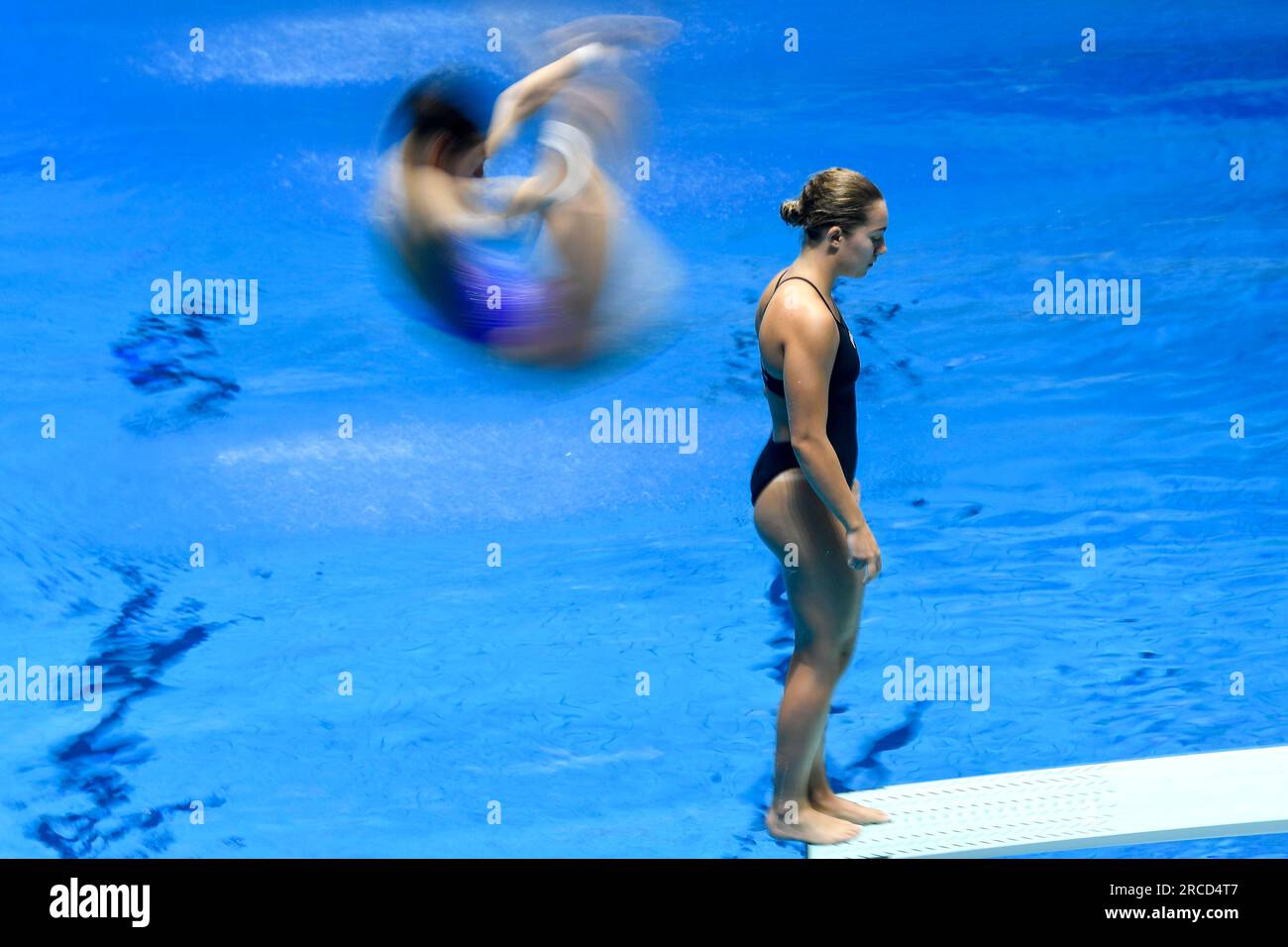Swimming, synchronized swimming, diving, water polo, and triathlon are sports that require a swimsuit to participate. Sports involving swimming or water-based activities necessitate the use of a swimsuit, which provides flexibility, comfort, and ease of movement in the water.
Apart from swimming, other aquatic sports such as synchronized swimming, diving, water polo, and triathlon also necessitate the use of a swimsuit for optimal performance. Whether it’s gliding through the water, executing graceful routines, or competing in endurance-based events, a proper swimsuit is essential to excel in these sports.
The right swimsuit not only enhances performance but also conforms to the body, reduces drag, and allows for better water flow, ensuring athletes can perform at their best in the water.
Swimming
The thrilling sport of swimming has captivated individuals for centuries. Whether you are gliding through tranquil waters or pushing your limits in intense competitions, swimming offers a range of opportunities for people to embrace the water. In this article, we will explore the different types of swimming and how they contribute to the overall enthusiasm for this sport.
Types Of Swimming
Swimming encompasses various styles, each with its own distinctive techniques and characteristics. Let’s dive into the most common types of swimming that you can enjoy:
Competitive Swimming
Competitive swimming is a fast-paced and electrifying discipline that showcases the skills and stamina of athletes. It demands precision, agility, and endurance, making it a thrilling spectacle for both participants and spectators alike.
Here are some key highlights of competitive swimming:
- Freestyle: Also known as front crawl, freestyle is the fastest swimming style. It allows swimmers to utilize any stroke they prefer, typically opting for the front crawl technique to maximize speed.
- Backstroke: As the name suggests, backstroke involves swimming on your back. This style requires excellent body control and coordination, as athletes navigate the pool while facing the ceiling.
- Breaststroke: Known for its distinctive frog-like leg movement, breaststroke demands intricate timing and strength. Swimmers execute powerful kicks and simultaneous arm movements to propel themselves forward.
- Butterfly: Butterfly showcases grace and power in equal measure. This challenging stroke requires synchronized dolphin kicks and simultaneous arm movements, creating an impressive display of athleticism.
- Individual Medley: The individual medley combines all four strokes mentioned above into a single race. Competitors must showcase their versatility by seamlessly transitioning between freestyle, backstroke, breaststroke, and butterfly.
Competitive swimming provides a platform for individuals to showcase their skills while pushing boundaries. The electrifying atmosphere of competitions, along with the pursuit of personal records and victories, keeps the swimming community fervently engaged in this sport.

Credit: www.alamy.com
Water Polo
Water polo is a challenging and intense sport that requires a great deal of skill, endurance, and teamwork. Played in the water, this exciting game combines elements of swimming, soccer, and basketball, making it a unique and physically demanding sport. Swimmers in sleek swimsuits battle it out, trying to outmaneuver opponents and score goals, all while treading water. Let’s dive in and explore the gameplay, positions, and strategies of water polo.
Gameplay
Water polo is typically played between two teams with six players each, including a goalkeeper. The objective is to score goals by throwing the ball into the opponent’s net while preventing the other team from scoring. The game consists of four quarters, each lasting around eight minutes, with breaks in between. Players must constantly stay afloat, using their legs to tread water and their arms to pass and shoot the ball. The fast-paced nature of the game requires players to be agile, quick-thinking, and have exceptional swimming abilities.
Positions And Strategies
Water polo has several positions, each with specific roles and responsibilities. The positions are:
| Position | Description |
|---|---|
| Goalkeeper | The goalkeeper is responsible for defending the team’s net, using their blocking and reflex skills to prevent goals. |
| Hole Set | Also known as the center forward, this position requires strength and physicality to score goals and draw fouls from the opponents. |
| Wings | The wing players are responsible for providing support, passing, and scoring goals. They need to be versatile and quick in their movements. |
| Defenders | Defenders guard the goal, block shots, and impede the opposing team’s attackers from scoring. They require strong defensive skills. |
| Utility Players | Utility players have the flexibility to play in various positions. They need both offensive and defensive skills to adapt to the game’s changing demands. |
Teams develop strategies to outmaneuver their opponents and create scoring opportunities. These strategies involve ball movement, counterattacks, and set plays. Players communicate and coordinate their movements, rapidly passing the ball and utilizing their teammates’ positioning to outsmart the opposing team’s defense. Effective strategies combined with individual skills and teamwork are essential to succeed in water polo.
Are There Any Olympic Sports That Start With B and Require a Swimsuit?
Olympic sports starting with b events include beach volleyball, which typically does not require a swimsuit but features athletes in beachwear. While swimming-related sports like synchronized swimming may involve swimsuits, they don’t start with the letter “B.” As such, no Olympic sports starting with “B” specifically require a swimsuit for competition.
Synchronized Swimming
Synchronized swimming is a beautiful and captivating sport that requires athletes to demonstrate impeccable timing, strength, and grace. It combines elements of dance, gymnastics, and swimming to create a visually stunning performance. In this blog post, we will explore the artistry and technical aspects of synchronized swimming, as well as the various elements that make it such a unique and challenging sport.
Artistic Expression
In synchronized swimming, artistic expression takes center stage. Athletes use their bodies to convey emotions, tell stories, and create breathtaking formations in the water. The sport demands precision and synchronization among team members, making it essential for the swimmers to establish a strong connection with one another. The choreography and music choice are carefully selected to complement each other and enhance the overall performance. Synchronized swimmers spend countless hours rehearsing their routines to achieve seamless transitions and harmonious movements.
One of the most captivating aspects of synchronized swimming is the ability of athletes to display a wide range of emotional expression while performing complex routines. The swimmers must convey joy, sadness, strength, and vulnerability all within their movements. This combination of athleticism and artistry sets synchronized swimming apart from other sports.
Elements Of Synchronized Swimming
Synchronized swimming consists of various elements that contribute to the overall performance. Let’s take a closer look at some of these elements:
- Figures: Figures are individual movements performed by swimmers that showcase their technical skills. These include spins, twists, and formations such as the ballet leg or the flamingo.
- Sculls: Sculling is a technique used in synchronized swimming to move and propel the body through the water without using the arms or legs. Swimmers use their hands and forearms to create circular motions to maintain stability and control.
- Lifts: Lifts are dramatic movements in which swimmers are supported by their teammates, creating visually stunning formations above the water’s surface. These lifts often require great strength, coordination, and trust among the team members.
- Throws: Throws involve lifting a team member out of the water to perform acrobatic movements before being caught by their teammates. The execution of throws requires not only strength but also precise timing and synchronization.
- Transitions: Transitions are the seamless movements between figures, sculls, lifts, and throws. These transitions require precise timing and coordination to create a fluid and visually appealing routine.
By incorporating these elements into their routines, synchronized swimmers create mesmerizing performances that captivate audiences around the world. The combination of technical skills, artistic expression, and teamwork make synchronized swimming a truly unique and awe-inspiring sport.

Credit: www.wsj.com

Credit: en.wikipedia.org
Frequently Asked Questions Of Sports That Require A Swimsuit
Q: What Sports Require A Swimsuit?
A: Sports that require a swimsuit include swimming, diving, water polo, synchronized swimming, and triathlon. These sports involve being in water and a swimsuit allows for optimal movement and flexibility while ensuring comfort and safety for athletes.
Q: Why Do Sports Require A Swimsuit?
A: Sports require a swimsuit for several reasons. Firstly, a swimsuit reduces drag in the water, allowing athletes to move more efficiently. Secondly, it provides necessary coverage and support for the body during physical activity. Lastly, swimsuits are designed to be water-resistant and durable, ensuring they stay in place during rigorous movements.
Q: What Are The Benefits Of Wearing A Swimsuit In Sports?
A: Wearing a swimsuit in sports offers numerous benefits. It allows for freedom of movement, enabling athletes to perform various strokes and techniques with ease. Swimsuits also provide support and enhance hydrodynamics, reducing resistance and maximizing performance. Additionally, they are designed to dry quickly and resist damage from chlorine and saltwater.
Q: Can You Wear Regular Clothes For Water Sports?
A: Regular clothes are not ideal for water sports due to various reasons. They can become heavy when wet, limiting movement and causing discomfort. Regular clothes are also not designed to withstand the effects of chlorine or saltwater, leading to damage and reduced longevity.
Furthermore, they may cause drag, hindering performance in the water.
Conclusion
Swimsuits are essential in numerous sports, offering not just comfort, but also agility and hydrodynamic advantage. Whether it’s swimming, diving, synchronized swimming, or water polo, a well-fitted swimsuit plays a crucial role in athletes’ performance. With its unique design and fabric, a swimsuit enables athletes to move with ease and efficiency in the water.
So, don’t underestimate the power of a swimsuit in these sports. Dive in and make a splash!





